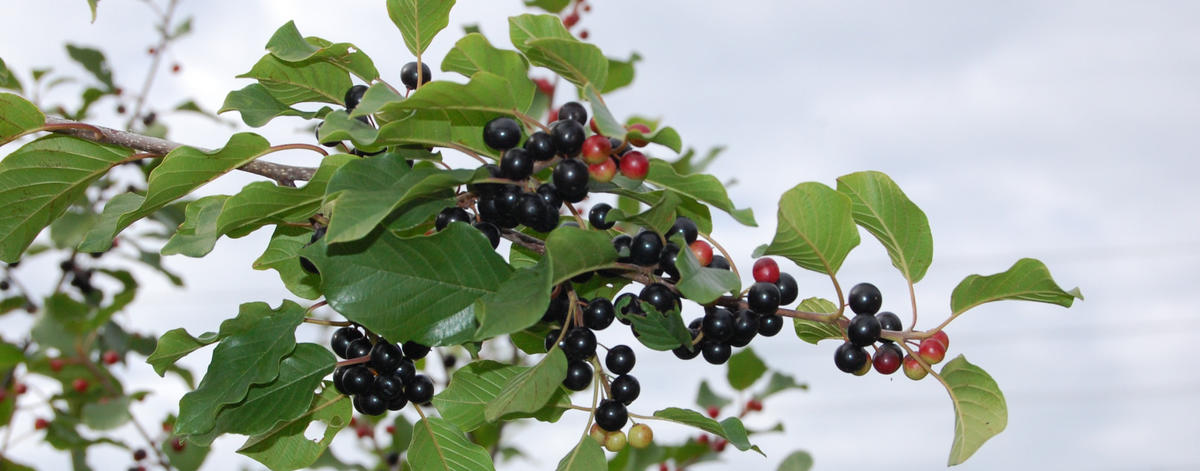
Glossy buckthorn
Image credit: "Glossy buckthorn" by Eli Sagor is licensed under CC BY-NC-2.0
Background
In the spring of 2017, a field researcher discovered an invasive glossy buckthorn shrub (Frangula alnus) infected with a type of rust, a type of fungus that creates raised, red-ish, orange-ish, or brown-ish spots on leaves. Rusts represent an umbrella of fungal diseases, some that affect cereal crops like oats and wild grasses. The variety of rust this researcher stumbled upon is new to the United States, and was later confirmed to have originated in another priority invasive plant: reed canarygrass.
MITPPC researchers are evaluating whether this new rust can offer safe, practical, and effective biocontrol for glossy buckthorn and reed canarygrass in Minnesota.
Research questions
- Where is the novel rust occurring in the state?
- What host species does the rust affect?
- Does the rust offer effective biocontrol for reed canarygrass and glossy buckthorn?
Outcomes
Researchers gave us a better understanding of the distribution of Puccinia coronata var. coronata (Pcc) in Minnesota as well as across the Midwest and Northeastern United States. In literature, they described the disease and improved the description of the pathogen’s morphological and phylogenetic data.
Through greenhouse trials, the team tested many species for susceptibility to Pcc. Main cereal crops, including oat, barley, rye, triticale, duram wheat, and bread wheat, are all resistant to Pcc. Species that can be harmed by Pcc include grass species, native buckthorn species, reed canarygrass, and glossy buckthorn. However, further research is needed to understand the impact of Pcc on reed canarygrass and glossy buckthorn in natural settings.
The research team also studied and tested Puccinia digitaticoronata, a recently described crown rust pathogen of Kentucky Bluegrass. They confirmed its presence in Minnesota and found that most Poa species are affected by P. digitaticoronata while cereal crops are not.
Researchers are building upon this line of research in separate project: Effects of Puccinia species complex on common buckthorn (Rhamnus cathartica).
Publications
- Aecial and telial host specificity of Puccinia coronata var. coronata, a Eurasian crown rust fungus of two highly invasive wetland species in North America (Plant Disease, 2023)
- Studies on Puccinia coronata var. coronata and Other Recently Observed Rust Fungi in Minnesota (dissertation, 2023)
- Puccinia coronata var. coronata, a crown rust pathogen of two highly invasive species, is detected across the Midwest and Northeastern United States (Plant Disease, 2022)
Outreach
- Bell Museum SCiPride Talks, 2023
- North American Rust Workshop, 2023
- PhD defense seminar video: Studies on Puccinia coronata var. coronata and other recently observed rust fungi in Minnesota (2023, 58 minutes)
- CFANS Research Symposium, 2023
- American Phytopathological Society Annual Meeting, 2021, 2022, 2023
- Upper Midwest Invasive Species Conference, 2020, 2022
- Fall Seminar Series at the Department of Plant Pathology, 2021
News and media
- A crown rust fungus could help manage two highly invasive plants in Minnesota (MITPPC, 2024)
- U researchers hopeful for naturally-occurring end to invasive buckthorn (CBS WCCO, 2023)
- Scientists think a fungus could conquer invasive buckthorn (Star Tribune, 2023)